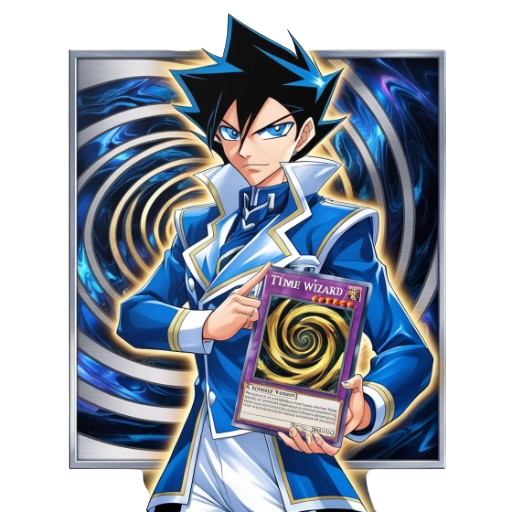The Art of Decision-Making: Master Your Choices 🧠⚡
Life is a series of decisions, and mastering The Art of Decision-Making is the key to navigating through them with confidence and clarity. From the moment you wake up to the legacy you leave behind, every choice counts. Some decisions are simple—like choosing between pancakes 🥞 or a smoothie 🍹 for breakfast. Others can completely alter the course of your life—like switching careers, ending a relationship, or moving to a new city 🏙️.
Whether you thrive or merely survive often depends on your ability to make decisions with courage, clarity, and confidence. 🎯
The Impact of Indecision: Why It’s the Silent Killer 😟
Hesitation keeps us stuck in a cycle of “what if” scenarios. We’ve all been there—overthinking every possible outcome and becoming paralyzed by analysis. This indecision is its own choice—a decision to stay where you are. But here’s the brutal truth: Life isn’t going to wait for you to make the perfect choice, and waiting around often means missed opportunities and growing regrets.
Indecision often stems from fear of failure, but ironically, not deciding is itself the most dangerous failure. Why? Because indecision leads to stagnation. When you can’t make a decision, you let your environment, circumstances, or other people dictate your life’s direction.
Real-Life Example:
Think of someone who’s stuck in a dead-end job. They dream of quitting and starting their own business, but they’re paralyzed by fear—fear of losing stability, fear of failing, fear of the unknown. Years go by, and they remain in the same position. What’s the cost of that indecision? Opportunities missed, growth stunted, and regret brewing in the background.
🚨 Here’s a truth bomb: Indecision weighs heavier than wrong decisions because it leads to stagnation. It robs you of growth and forward momentum. To thrive, you need to take control of your path. Mastering decision-making puts the power back in your hands.
The Beast Mentality: How to Make Decisions Like a Boss 👑
No one who ever achieved greatness did so by playing it safe. If you want to level up, you have to treat every choice as a stepping stone to your best self. Here’s how to apply the beast mentality to your choices:
- Embrace the fear: Every major decision should scare you a little. Fear means you’re venturing into new, growth-filled territory. 🦁
- Take calculated risks: Big moves involve uncertainty, but this is where progress lives.
- Visualize your future self: Will you look back and regret not trying? More often than not, the answer pushes you toward action.
Here’s an important mindset shift: Mistakes aren’t the end. They are learning experiences. The greatest innovators—whether in business, science, or art—failed many times before they succeeded. What separates them from the rest is the ability to take action and learn from every misstep.
Historical Example:
Consider Thomas Edison, the inventor of the lightbulb. He famously failed over 1,000 times before finally succeeding. His approach was simple: “I have not failed. I’ve just found 10,000 ways that won’t work.” This level of persistence and decisive action is what separates the greats from the ordinary.
Trust Your Gut: The Science Behind Intuition in Decision-Making 🤔
You’ve probably heard that you should always rely on logic when making decisions. But your gut instinct is the product of years of experience, feelings, and knowledge—all distilled into an intuitive response. Ignoring it means leaving a crucial tool on the table. 💡
Recent research supports this. According to a study by the Max Planck Institute for Human Development, intuition—when based on accumulated experiences—often leads to faster, more accurate decisions than pure logic. Your brain subconsciously processes past experiences and emotions to form what we call a “gut feeling.” In essence, it’s your mind’s way of guiding you based on what it has learned, even if you can’t consciously articulate why.
This doesn’t mean you should ignore logic entirely. Instead, successful decision-makers know how to balance instinct with reason. They leverage their intuition for faster decision-making but back it up with logic and facts.
Practical Tip:
When making a decision, pause for a moment to ask yourself: What does my gut say? Write it down. Then, list the logical pros and cons of the decision. Often, you’ll find that your intuition aligns with logic—giving you the best of both worlds.
The 5-Second Rule: A Hack for Overcoming Paralysis ⏱️
Still stuck? Here’s a quick hack: The 5-Second Rule. If you feel compelled to do something, act within five seconds. 🖐️
This simple method, made famous by motivational speaker Mel Robbins, prevents your mind from overthinking. The longer you wait, the more your brain will sabotage you. So, count down from 5 and act! Whether it’s starting that project, making a call, or saying yes to an opportunity, decide and take action. 🚀
The 5-second rule works because it interrupts your brain’s natural tendency to talk you out of things. We’ve evolved to avoid risks, which in modern times often translates into avoiding anything that makes us uncomfortable—like asking for a promotion, starting a business, or even saying “no” to a social engagement.
Example:
Say you want to approach your boss for a raise, but the thought of rejection keeps you from taking action. You’ve rehearsed it in your head 100 times, but you haven’t made the move. Apply the 5-second rule: Count backward—5, 4, 3, 2, 1—and go for it. It forces your brain to move from hesitation to action before fear takes over.
Regret Is Worse Than Failure: Why You Should Always Choose Action Over Comfort 😔
We’ve all been taught to fear failure, but here’s the reality: failure is often a stepping stone to success. What’s worse than failing? Never trying at all. Regret is a lifelong burden that sticks with you, much longer than the sting of temporary setbacks.
Imagine being on your deathbed, reflecting on your life. Will you regret the times you tried and failed, or the times you never took the leap? Regret is far more painful than failure, and it lingers far longer than embarrassment or setbacks ever will.
Scientific Study:
A study conducted by Cornell University found that people regret inaction far more than action. In the long term, we feel worse about the risks we didn’t take rather than the risks that didn’t pan out. The missed chances, the untapped potential—those are the things that haunt us.
So, go ahead and take the risk. Fail fast. Learn fast. Grow faster.
The Step-by-Step Guide to Mastering Decision-Making ✅
1. Identify the Decision
- First, clearly define what decision you need to make. Is it a small daily choice or a life-altering one? Clarifying the decision helps reduce overwhelm.
2. Set a Deadline
- Don’t let the decision drag on indefinitely. Set a specific deadline for when the choice needs to be made to avoid the paralysis of overthinking.
3. Gather Information, But Don’t Overload
- Information is power—but too much information can cloud your judgment. Research the relevant factors, but avoid “paralysis by analysis.”
4. Weigh Your Options Using a Pro-Con List
- Sometimes the simplest tools are the most effective. List out the pros and cons for each option, focusing on how each aligns with your values and long-term goals.
5. Trust Your Gut & Act
- Once you’ve done the research, trust your instincts and act quickly. Remember, action is better than inaction, even if the result isn’t perfect.
FAQs on Decision-Making
1. How can I become a more decisive person?
- Becoming more decisive involves practice. Start with small decisions and work your way up to bigger ones. Use tools like the 5-second rule to take quick action.
2. What do I do if I’m afraid of making the wrong decision?
- Remember that indecision is often worse than making the wrong decision. Even if you choose incorrectly, you can always course-correct. Fear shouldn’t be the reason you don’t take action.
3. How do I balance logic and intuition in my choices?
- Use a combination of both. Gather the necessary facts, but also listen to your gut feeling, which is often informed by past experiences. Logic and intuition should work together, not against each other.
4. How can I avoid overthinking every decision?
- Set time limits for decision-making and stick to them. The longer you dwell on a decision, the more likely you are to second-guess yourself.
5. Can you become better at decision-making over time?
- Absolutely! Like any other skill, decision-making improves with practice. The more decisions you make, the more confident you’ll become in your ability to choose wisely.
Conclusion: Make the Choice Today
The secret to decision-making isn’t hidden in some sacred text or exclusive seminar. It’s in you. You know the right choices—or at least the choices that align with who you want to be. Stop second-guessing. Start deciding. Whether it’s a small habit you need to change or a life-altering move, make the choice that brings you closer to the life you deserve.
Because at the end of the day, it’s your decisions—not your circumstances—that define you. Be bold. Be relentless. Be the beast of your own story. 🦸♂️✨



